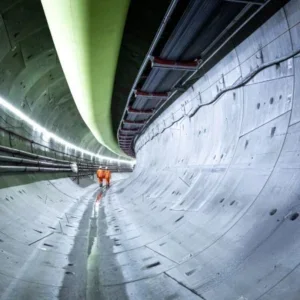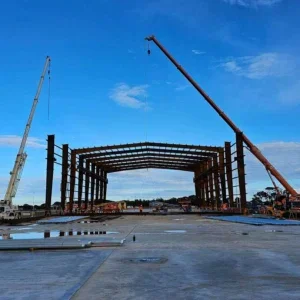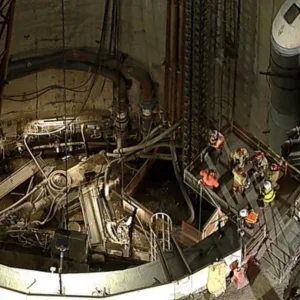Engineers on the Limerick interceptor sewer, Ireland, are shifting up a gear at the beginning of next month, by moving to a 24 hour, seven-day week shift pattern, because almost impossible ground conditions and mechanical failures have put the project back at least six months.
A 3.3m diameter Lovat EPBM is being used to bore a 2.5km long sewer tunnel in two drives – one 300m long, the other 2.2km. The TBM is erecting a lining of concrete segmental rings to an i.d. of 2.8m. The contract also includes 11 shafts ranging from 4.5m in diameter to 9m, and sinking 14m in depth.
However, the ground has been far more difficult than anticipated. Sitting at the bottom of the tunnel is limestone, while sand and gravel flows in through the two-inch grout holes. “It is the hardest ground conditions I’ve ever been in,” resident engineer, Russell Naylor, admitted.
He also said that the contractor had pulled out the stops to keep the project moving. “Murphy has done extremely well, they are really putting in the manpower,” he said.
There were also costly mechanical delays. Two weeks were lost when the hydraulic pump near the face of the TBM was punctured. Then the hydraulic oil became contaminated, which meant the replacement of the hydraulic pumps and five hydraulic motors.
Five months in total were then spent sinking two 12m deep recovery shafts.
The tunnel, for client Limerick Corporation, forms one section of an interceptor sewer linked a new sewer network, under construction throughout the city.
Naylor said that the project will almost certainly result in substantial claims, both for the mechanical failures and the delay. But he is confident that the finished tunnel will be delivering sludge to the new pumping station by the end of Spring 2003.







